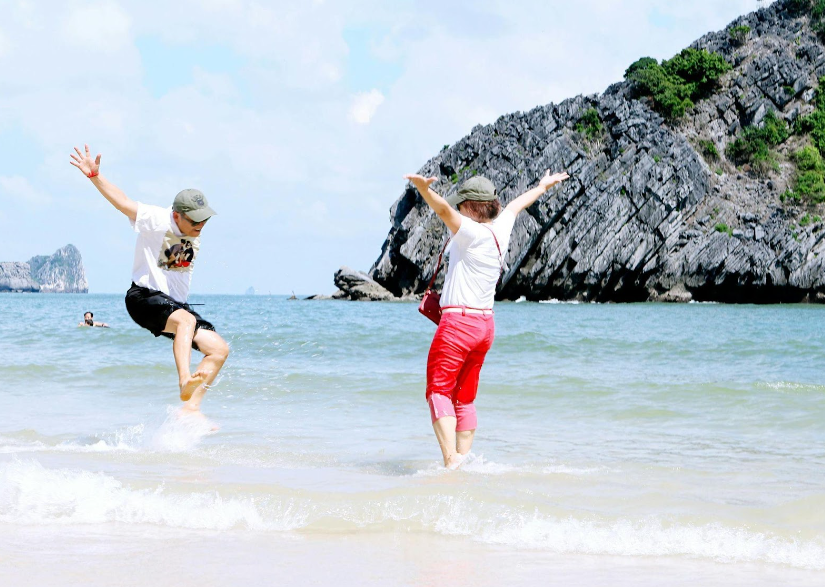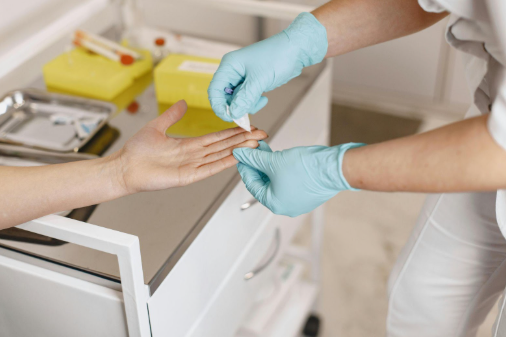May 1, 2025
Beach Safety: First-Aid Tips for Common Summer Injuries
Beach Safety: First-Aid Tips for Common Summer Injuries

A day at the beach creates images of relaxation and fun-filled moments, such as splashing in the waves, building sandcastles, or soaking up the sun. However, the beach environment, with its sun, sand, and water, also presents potential hazards that can lead to minor injuries. Preparing with basic first-aid knowledge leads to a smooth and enjoyable beach trip for you and your loved ones.
Let’s explore common beach injuries and learn easy-to-follow first-aid tips to turn a potentially stressful situation into a minor inconvenience.
Sunburn
Sunburn is the most frequent injury encountered at the beach due to excessive exposure to ultraviolet (UV) radiation. Sunburn types can range from mild redness and discomfort to severe blistering and pain. Apply sunscreen liberally and evenly to all exposed skin 15 minutes before heading to the beach. You should also choose a broad-spectrum sunscreen with an SPF (Sun Protection Factor) of 30 or higher.
Reapply sunscreen every two hours or more often if you are swimming or sweating heavily. Seek shade during peak sun hours, typically between 10 am and 4 pm, when the sun's rays are strongest. Wear protective clothing, such as wide-brimmed hats, sunglasses, and lightweight, long-sleeved shirts and pants, to provide additional coverage.
Treatment
If you experience a sunburn, the first step is to get into a cool, shaded area. Rehydrate by drinking plenty of cool water or electrolyte drinks to replenish fluids lost through sweating. You must apply cool compresses or aloe vera gel to the affected area to soothe the burning sensation and promote healing. Pain relievers like ibuprofen or acetaminophen can also help when it comes to dealing with discomfort. Avoid picking or popping blisters, as this can increase the risk of infection.
If you experience severe sunburn with widespread blistering, fever, chills, or nausea, seek medical attention. These symptoms could indicate heatstroke, a more serious condition requiring professional medical intervention.
Cuts and Scrapes
Sharp objects like seashells, rocks, or even broken beach toys can cause cuts and scrapes, especially for children running barefoot on the beach. The first line of defense is to thoroughly clean the wound with clean, running water to remove any dirt or debris that might be lodged in the wound. Then, you must use a clean cloth or gauze pad to stop the bleeding. Once the bleeding has subsided, clean the wound with an antiseptic solution or gentle soap and water. Apply a sterile bandage to protect the wound and promote healing.
Pack a well-stocked first-aid kit whenever you head to the beach. It should include essential supplies like bandages of various sizes, antiseptic wipes or solutions, pain relievers, and tweezers for removing splinters. When dealing with deeper cuts or wounds that are bleeding profusely, do not attempt to treat them yourself. Seek medical attention to ensure proper cleaning, stitching if necessary, and a tetanus shot if your vaccination is not up-to-date.
Jellyfish Stings and Sea Lice Bites
Jellyfish, with their translucent bodies and trailing tentacles, are a common sight in coastal waters. While not all jellyfish stings are harmful, contact with certain species can cause painful and irritating stings. The severity of the sting depends on the type of jellyfish and your sensitivity.
Here's what to do if you or someone you're with encounters this situation:
- Removing the Tentacles: The first step is to remove any visible tentacles from the skin using tweezers or gloved hands. Be cautious, as even detached tentacles can still sting. Avoid using bare skin to remove them, as this can worsen the sting.
- Rinse Thoroughly: Rinse the affected area with saltwater, not freshwater. Freshwater can activate some jellyfish venom cells, causing more stinging. Flush the area with saltwater to remove any remaining tentacles or venom.
- Heat Therapy for Relief: Apply hot water (around 45°C or 113°F) to the affected area for 20 minutes. Hot water helps to deactivate the stinging cells and reduce pain. You can use a hot water bottle wrapped in a towel or soak the affected area in hot water.
- Soothing the Itch: Once the initial pain subsides, apply calamine lotion or baking soda paste and water to the affected area to soothe the itch. Over-the-counter antihistamines like diphenhydramine (Benadryl) can also reduce inflammation and itching.
Precautions
Avoid rubbing the affected area, as this can further spread the venom and worsen the sting. Applying ice or alcohol can also irritate the skin and prolong discomfort. If you experience severe pain, difficulty breathing, muscle cramps, nausea, vomiting, or dizziness after a jellyfish sting, seek medical attention. These symptoms could indicate a serious allergic reaction and require prompt medical intervention.
Sea Lice Bites
Sea lice are not actually lice but rather tiny marine organisms that can cause itchy bites. These bites are usually harmless and resolve on their own within a few days, but they can be quite irritating. Here's how to find relief from sea lice bites:
- Step out of the water to prevent further bites.
- Rinse the affected area thoroughly with saltwater to remove any remaining sea lice.
- Like jellyfish sting treatment, apply calamine lotion or a paste of baking soda and water to the bites to help reduce itching and inflammation. Over-the-counter antihistamines can also help alleviate discomfort.
- In rare cases, sea lice bites can infect people. If you notice the bites becoming red, swollen, or oozing pus, seek medical attention to prevent complications.
Heat Exhaustion and Heatstroke
Spending extended time in the hot sun without proper hydration and breaks can lead to heat exhaustion or heatstroke, both serious conditions requiring immediate attention. Here’s how you can recognize and handle the situation:
Heat Exhaustion
Heat exhaustion is the less severe form of heat illness, and the symptoms include headaches, dizziness, nausea, vomiting, fatigue, and excessive sweating. The person may also experience muscle cramps and pale, clammy skin.
Treatment for Heat Exhaustion
If someone is experiencing heat exhaustion, the first step is to move them to a cool, shaded area. Loosen or remove any tight clothing and encourage them to drink plenty of cool fluids, preferably water or electrolyte drinks, to replenish fluids lost through sweating. Apply cool compresses to the forehead and neck to help lower their body temperature. If the symptoms worsen or do not get any better within 30 minutes, seek medical attention.
Heatstroke
Heatstroke is a medical emergency. It occurs when the body cannot regulate its temperature, leading to a dangerously high body temperature (above 40°C or 104°F). The symptoms of heatstroke to watch out for include confusion, seizures, loss of consciousness, and hot, dry skin.
Treatment for Heatstroke
You should immediately call emergency services if you suspect someone is experiencing heatstroke. As you wait for help, move the person to a cool, shaded area. Loosen clothing and apply cool compresses to the forehead and neck. Do not give fluids by mouth, as this could cause choking. The goal is to lower body temperature as quickly as possible until help arrives.
Preventing Heat Illness
To avoid heat exhaustion and heatstroke, stay hydrated by drinking plenty of fluids throughout the day, even if you don't feel thirsty. Taking lots of breaks in the shade can also help, and during peak sun hours (10 am to 4 pm) try to take even more breaks in the shade. Wear loose-fitting, lightweight, and breathable clothing, and consider using a wide-brimmed hat for additional sun protection.
Soak up the sun without sunburn or health concerns cramping your style!
Bayou Bend Health System can be your partner in beach safety. From pre-beach checkups to minor injury care, we're here to keep your summer adventures worry-free.
Contact us today to learn more.



